Those of cynical mindset could deem Wurm: Journey to the Center of the Earth a messy game, but they’d be wrong. At the very least it’s several messy games combined into one. A 1991 NES release from Cyclone System and Asmik, it's a multi-genre hybrid that delivers shooting stages, side-scroller levels, unique first-person boss battles, and through it all the story of a spirited lady protagonist named Moby.
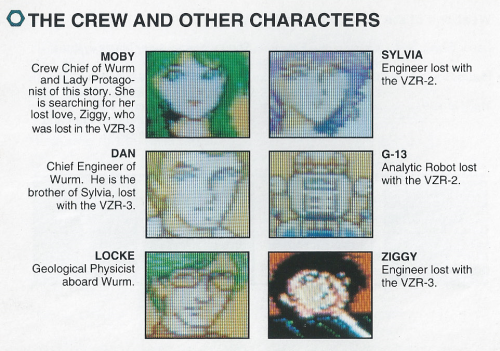
Well, that’s what the manual calls her. See? There’s something charmingly odd about the low-key chauvinism of labeling her a “lady protagonist,” perhaps in testament to how few games in the Nintendo Entertainment System's library actually have women in lead roles. However, there’s more to Moby and Wurm itself.
For starters, they’re both ambitious. Our green-haired heroine captains a tunneling craft called the VZR-5, drilling deep into the earth in a search for previous VZR expeditions—and, in particular, her boyfriend Ziggy (possibly named after the David Bowie album and probably not the bulbous-nosed comic character). She stumbles into a complicated subterranean war between the remnants of ancient kingdoms who somehow combine every major mythic lost civilization into a single tale.
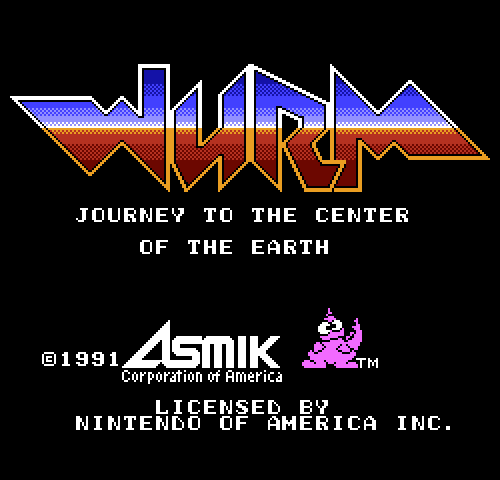
And Wurm winds her journey across four types of levels. The VZR flies through caverns in horizontal stages as well as vertically scrolling ones, while Moby ventures out of the ship to wander ruins and tunnels sparsely populated by beasts. Each chapter showcases a clash between the VZR and a large monster, which requires Moby to talk to the crew for hints and “possibility” points while dodging and shooting down the creature’s attacks. And there’s a little tedium in every format: the VZR shooter levels are simple, the on-foot stages have little variety in their enemies, and the boss battles involve a lot of seemingly pointless chatter and awkward aiming.
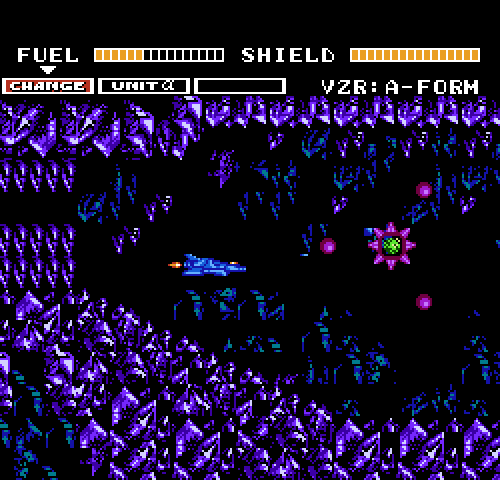
Yet it’s a fascinating game in full, as each piece of Wurm has its layers. The shooter levels may not be very complex in their design, but they let the VZR transform into different forms that gain new weapons, abilities, or just better fuel rates. A depleting energy meter keeps Moby’s crew from being too cautious, and a regenerating energy shield makes their ship vulnerable only when it takes damage rapidly. That balancing act lifts the stages beyond the typical NES shooter.
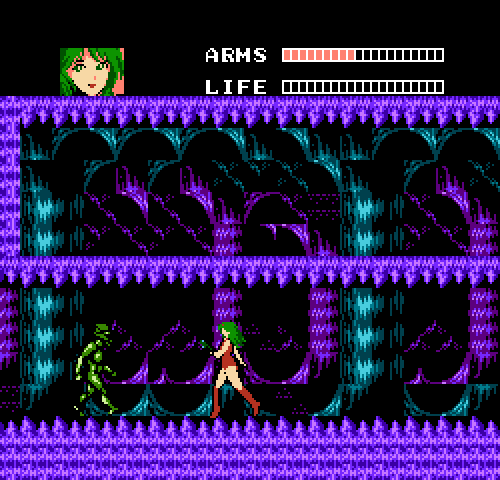
Moby’s side-scrolling forays are simpler in their demands: she explores, she jumps, she kicks, and she wields a handgun with a limited ammo supply. Yet the stages she wanders are intriguing sights, with their random backdrops of ancient ruins and empty caverns, and the subtle colors mix well with a soundtrack that’s bubbly, sharp, and just a little haunting.
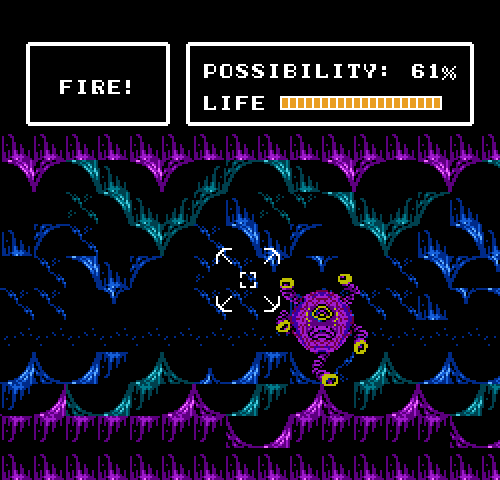
And the first-person battles with massive creatures? True, Moby spends a lot of time chatting repetitively with crew members who try to puzzle out a creature’s weakness and raise that possibility percentage to a hundred, at which point a single shot brings down your foe. However, there’s some personality in the conversations (including a Helen Keller reference you might not expect) and a share of twists along the way as the boss lineup expands to an organic-mechanical creation and a face-off with Moby's own ship. Wurm’s plot twists aren’t elaborate, but they’re plentiful for a title from 1991. If there’s ever a dull point in the story or the gameplay, there’s always something new right ahead.
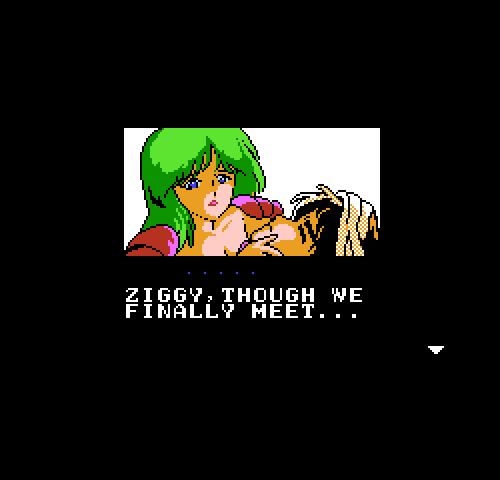
Moby herself shows the same variety. She’s seemingly pulled straight from an outlandish 1980s anime OVA, sashaying through hostile terrain in epaulets and a battle leotard while the rest of her crew wears sensible jumpsuits, but she’s a surprisingly resolute main character for an NES game. Wurm lets her face trepidations, grieve her losses, marvel over discoveries, brim with vengeful fury, and, even taunt arrogant underworld rulers. It’s no competition for our modern array of complex heroes showing us all that games are serious entertainment (and don’t you forget it), but for an era when video games had threadbare premises and silent heroes, Moby certainly gets her moments. The best ones come when she’s sassing monstrous thugs who, apparently shocked at the idea of NES-era protagonists with actual personalities, can only muster retorts of “Whaat!”
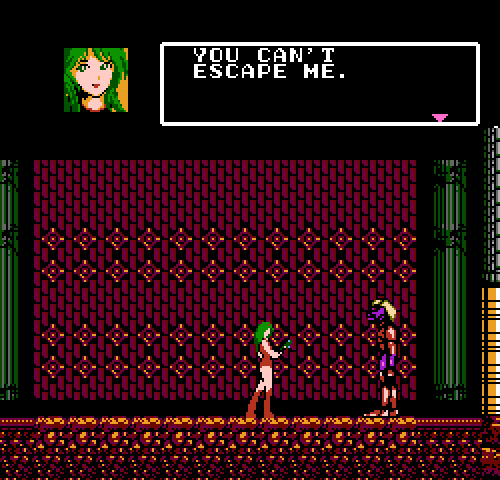
Wurm stands alone, though it bears more than a faint resemblance to Vic Tokai’s original Golgo 13: Top Secret Episode. Moby doesn’t seduce secret agents in hotels or snipe Hitler’s pickled brain, but her sprite has a similar soft-edged look, and her game has similar diversity (though she moves much faster and smoother than Duke Togo). That’s no accident, as designer Shouichi “Angela” Yoshikawa was the driving force behind both games. Together with producer Hiroshi Kazama and developer Cyclone System, Yoshikawa drew inspiration from Edgar Rice Burroughs, Lost in Space, and Cyborg 009, casting a web wide enough that Wurm never feels bluntly derivative of one particular source
Yoshikawa even maintained a website all about Wurm. It’s apparently lost now, but there’s still a great in-depth interview at the GDRI. Even without the creator’s site, Wurm has steadily gained a better reputation, evolving from a possible “kusoge” to an expensive Famicom title and, I hope, a genuine cult favorite. Is it just the plucky lady protagonist? Perhaps that’s part of it, but Wurm offers more than that. There’s a vision behind it, an inspired tone that comes from a creator believing in their creation and overseeing it every step of the way. Heck, Yoshikawa even did the localization!
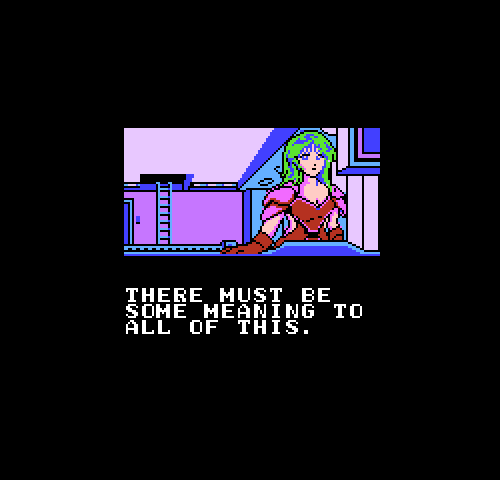
I was harsh toward Wurm when I wrote about it for GameSetWatch many years ago, citing its jumbled approach and frequently empty stages. Yet I’ve come around, and now I count it among my favorite NES titles. The gameplay mixture is enticing, the vacant side-scrolling levels evoke mystery in ways I never noticed before, and Moby sticks around in memory after most protagonists (gentleman or lady) fade away. I had yet to realize that it doesn’t matter if games are critically, objectively good, if such a thing even exists. All that matters is whether they’re interesting or not. And Wurm is.
